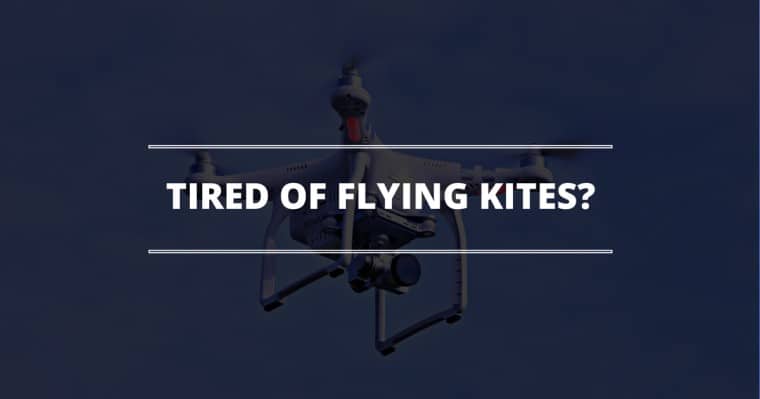Drones or Unmanned Aerial Vehicles (UAVs) are a relatively new technology and have been designed to provide access to locations where mobility is limited. The general consensus is that import of any drones is suspended in India currently, but the reality is that these laws are sketchy and are dynamic with the happenings in the tech world. Drones in India are permitted as long as you fly them over private property, and you have necessary permission to fly, from the owner of the concerned property.
Drone Laws In India – General Guidelines
Flying your drone over public property requires thorough permission proof from authorities. Following are few of the locations that you should completely avoid flying your drone in India.
- Crowded areas like markets, shopping centres or malls.
- Around civilian and military airport fields.
- Around military installations or battalion areas.
Witnessing the increasing interest in flying drones in India, solely for recreational and production purposes, the Ministry of Civil Aviation recently posted a notice that clears almost all doubts regarding drone flying laws in the country.
The Ministry affirms that the International Civil Aviation Organisation or the ICAO is the global governing body for aerial vehicles and there is currently no intimation from them regarding universal laws for managing UAVs.
The MCA states that, “UAS has potential for large number of civil applications. However, its use besides being a safety issue, also poses security threat. The Airspace over cities in India has high density of manned aircraft traffic. Due to lack of regulation, operating procedures/ standards and uncertainty of the technology, UAS poses threat for air collisions and accidents.”
These guidelines further toughen the plot by mentioning that, “No non government agency, organization, or an individual will launch a UAS in Indian Civil Airspace for any purpose whatsoever.” This is the moment till DGCA lays down proper rules for drone management.
Indian Drone Laws – Measures By Unions
As air traffic growth in India puts pressure on available airspace, the country’s unmanned aerial vehicle (UAV) industry is calling for a centralized body to draft regulations and set standards for UAV systems. In 2007 the Centre for Military Airworthiness and Certification (CEMILAC) has recommended that in future, all unmanned aerial vehicles (UAVs) should be cleared for their airworthiness. This decision is currently pending with the Ministry of Defence and its clearance means a thorough scanning of potential failures and their impact. If CEMILAC’s persistence on airworthiness certification for UAVs is accepted, norms and procedures will be laid down.
A big counter to the issue of allowing UAVs to operate is that non-functioning vehicles can fall down and damage human life. Also, with 90% of Indian airspace being civilian-specific, restricting them to just military spaces isn’t a sufficient decision.
Indian Drone Laws – Future Guidelines
According to sources, DGCA is soon expected to roll out guidelines that control the use of UAVs in Indian airspace. As per these guidelines, drones will be categorized under four weight categories – Micro (<2kg), Mini (<20kg), Small (<150kg) and Large (>150kg). Apart from their weight standards, all drones will need to be registered with the authorities before usage on any public property.
CORRECTIVE ACTION IS NEEDED – The rampant growth of the drone industry globally is subjecting aviation regulators everywhere to check multiple applications sent for use of UAVs. As is with other countries, the DGCA might lack a flexibility in terms of coping up with changing technological needs. For this, a dynamic and possibly external team should be assigned to manage the testing of drone applications and resolve issues with those that have been verified as ‘safe to use’.
Apart from setting up better human resources, the authorities should try to promote the organisations that are willing to use their drones as a method of national and cultural promotion. Measures like providing a single-window clearance module and decentralizing verification to local police could prove to be effective. A web portal could also be introduced to provide for approval to smaller-sized drones, ones that will be used for individual use. The current timeline require an applicant to wait for an average of 90 days before the application is reviewed for approval or rejection.
DRACONIAN LAWS NEED TO GO – A very weird addition to drone laws in India (however sketchy they may be) is the prohibition of access to UAVs by any foreign entity within the country. Foreign firms and individuals are not permitted from flying drones over public and even private estates. This absurd xenophobic law should be ideally removed and instead foreign nationals be allowed to improve the rate of R&D in the field of unmanned aviation.
While we are waiting for a final and assuring confirmation on the exact condition of drone laws in India, DGCA and the MCA have given a positive response for the upcoming happenings in the aviation sector.
The regulations currently only provide a framework for operations of drones, but fail to clarify rules for the purpose of designing, developing and importing UAVs into India. These vehicles have a wide variety of benefits to the agricultural, security and logistics sector and loosening up rules is an indirect boon for the Ease of Business Index. Of course, the safety, security and privacy risks that drones introduce are to be borne in mind and the regulator will aim at striking the right balance.

Hi
Thanks a lot for providing me such important info.
Really interesting laws.
Great job.